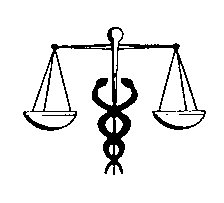For millions of us allergy sufferers, antihistamines ease the annoying discomfort accompanying allergic reactions. Being an allergy sufferer myself, through the decades I have taken both over-the-counter and prescription antihistamines, some of which have been discontinued. Allergic reaction symptoms include nasal congestion, sneezing, coughing, headache, and itching indicating sensitization to certain allergens such as pollen, mold, dust, or insect venom. Repeated exposure results in allergic reactions due to antigen-antibody interactions.
First, antigens come into contact with lung, gastrointestinal tract, and/or skin tissue, and enter into the bloodstream. Next, mast cells and white blood cells misidentify these as invaders and inappropriately respond by releasing histamines causing tissue injury. The severity of the allergic reaction is directly proportional to the amount of histamine released.
Histamines dilate small blood vessels and capillaries, but contract smooth muscles. Responses include decreased blood pressure, increased heart rate, difficulty breathing, constipation or diarrhea, heartburn and nausea, and proteins and fluids leaking from capillaries. Nasal mucous membrane capillaries leaking, result in nasal congestion. Skin capillaries leaking produce hives and swelling resulting in pain and itching.
Thankfully all antihistamines block most of histamines effects by competing at histamine receptor sites thereby preventing them from producing an effect on the tissues. Antihistamine drugs prevent, but can't reverse, histamine responses. Some of the general uses of antihistamines include relief from nausea and vomiting, relief from motion sickness, and relief from coughs. Usually antihistamines are administered orally since they are well absorbed in the intestinal tract, or topically, although a few can be given intravenously. To maintain a therapeutic dose, these medicines are given two to four times per day because the liver rapidly metabolizes them.
First generation antihistamines, which can be used interchangeably, include chloropheniramine (Chlortrimeton®), diphenhydramine (Benadryl®), and promethazine (Phenergan®). Some of the side effects include nose and mouth dryness, and drowsiness. Some antihistamines are also used as local anesthetics because they depress sensor nerve activity. When taking these antihistamines, it is advisable to not drive or perform hazardous tasks, and not to use alcohol or other drugs.
Second generation antihistamines include cetirizine (Zyrtec®), and Loratidine (Claritin®), and third generation antihistamines include fexofenadine (Allegra®), claim to be more selective for histamine receptors and cause less drying or sedating. However, these are contraindicated in patients with hepatic dysfunction, and when taking certain antifungal, antibiotic, and serotonin release inhibitors due to unfortunate deaths. My personal experience with these antihistamines is I did not find the relief I needed.
Because of the sedative effect, antihistamines are used in sleep aids like Nytol®, or Tylenol PM®. Because of the drying effect, antihistamines are found in over
The best method of achieving wellness and optimal weight is by eating healthy and exercising. Debby is a Registered Nurse and a citizen journalist.
Gardening for Joy!
About Healthy Diets [http://www.about-healthy-diets.com]
Article Source: http://EzineArticles.com/?expert=Debby_Bolen

No comments:
Post a Comment